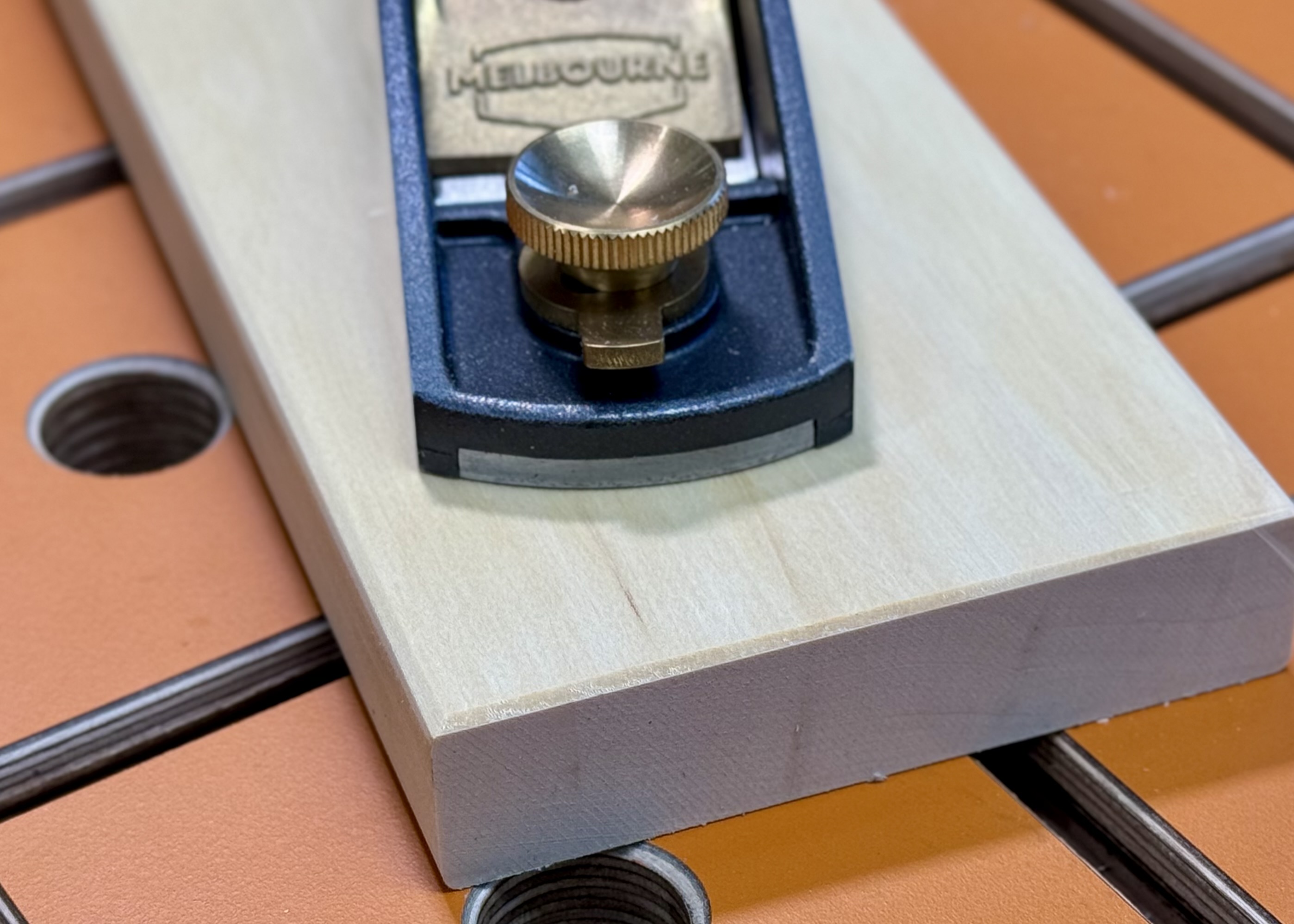The Art of Chamfering: How to Perfect Edges with a Block Plane
Posted by Vic Tesolin on 22nd Oct 2024

Chamfering is a subtle yet transformative woodworking technique that adds a polished and professional touch to your projects. At its core, chamfering involves beveling the sharp edges of wood to create a flat, angled surface. This simple detail can dramatically improve both the aesthetics and functionality of your work, softening edges and eliminating the risk of splinters or damage to vulnerable corners. One of the best tools for achieving a perfect chamfer is the block plane—a versatile and precise instrument that can handle even the most delicate chamfering tasks.
In this blog, we’ll explore the art of chamfering with a block plane and how you can master this essential technique to elevate your woodworking.
Why Chamfer?
Chamfering is not just an aesthetic choice; it’s a practical one, too. When wood projects have sharp, square edges, those corners are prone to chipping and wear. Chamfering reduces this risk by removing the sharp edges and replacing them with a smooth, angled cut. The chamfered edge is less likely to be damaged, which can prolong the life of your project.
From a design perspective, chamfering can add depth and visual interest to your work. Whether you’re building furniture, cabinetry, or decorative pieces, adding a chamfered edge gives your project a refined, finished look that enhances its overall appearance.
Why Use a Block Plane for Chamfering?
While there are various ways to chamfer edges—using sandpaper, routers, or specialized chamfering tools—the block plane stands out for its precision and control. Unlike power tools, a block plane allows you to feel the material and control the depth of the cut with great accuracy. This is especially important when you’re working with delicate pieces or want to create a subtle, fine chamfer rather than an aggressive bevel.
The block plane’s compact size and adjustable blade make it easy to hold and maneuver with one hand. This allows for smooth, controlled strokes as you shave off the material, resulting in clean and consistent chamfers. You can easily adjust the depth of the cut to create anything from a light, shallow chamfer to a more pronounced edge.
Steps to Achieve a Perfect Chamfer with a Block Plane
1. Mark the Chamfer Line: Before starting, it’s helpful to mark the width of your chamfer on the wood. You can do this with a pencil and a combination square. Marking helps you maintain a consistent chamfer across the entire edge and ensures uniformity, especially if you’re working on multiple pieces.
2. Adjust Your Block Plane: Depending on the size and type of chamfer you want, adjust the depth of your block plane blade. A light cut is ideal for creating thin, subtle chamfers, while a deeper setting will remove more material for a bolder chamfer.
3. Start with Light Passes: Position the block plane at a 45-degree angle to the edge of the wood and take light, controlled passes. It’s best to start with a shallow setting and gradually increase the depth of the chamfer as you get a feel for the cut.
4. Work with the Grain: Always chamfer in the direction of the wood grain. Cutting against the grain can result in tear-out and rough edges, whereas following the grain will produce smooth, clean lines.
5. Check for Consistency: After a few passes, step back and inspect the chamfer for consistency. If the chamfer looks uneven or rough, make additional light passes with the block plane until you achieve a uniform bevel.
6. Finish and Smooth: Once you’ve completed your chamfer, use fine-grit sandpaper to smooth out any minor imperfections and give the edge a polished finish.
Refining Your Craft
Mastering the art of chamfering with a block plane takes practice, but once you’ve developed a feel for the tool, you’ll find it indispensable in your woodworking toolkit. Chamfering adds a level of craftsmanship and finesse to your projects, turning sharp, functional edges into a beautiful design feature.
With a quality block plane and a little patience, you can create smooth, professional chamfers that elevate the look and durability of your woodworking. So next time you’re working on a project, consider adding a chamfered edge—it’s a small detail that makes a big impact.
